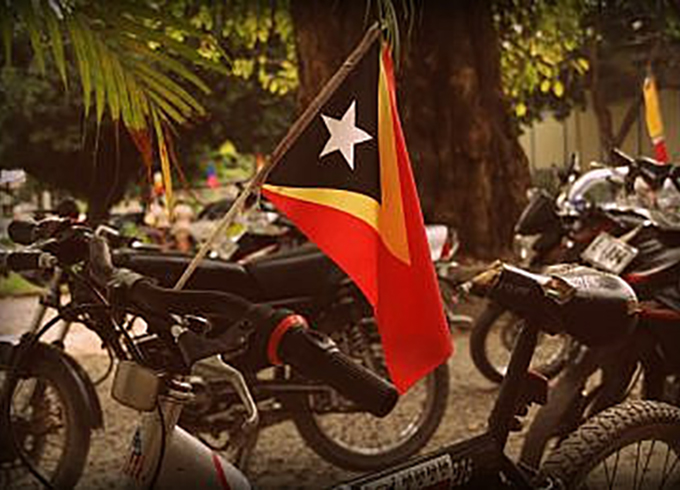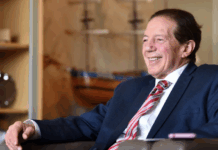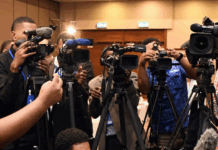
By Guteriano Neves in Dili
After nearly a year of political deadlock resulting from a minority government, and a divisive political campaign, Timor-Leste is set to have a stable government after an early election, held last Saturday.
The forthcoming government will face an uneasy task in delivering on the promises made during the campaign.
The result of the election brought four parties to be represented in the Parliament. The Aliança de Mudança para o Progresso (AMP), led by resistance leader Xanana Gusmão, won an absolute majority in the latest polls, securing 34 seats out of 65 seats in the Parliament.
This will be sufficient to pass the programme and budget in the Parliament, both of which the previous minority government failed to do. Frente Revolucionáriu de Timor-Leste Independente (Fretilin) came in second, maintaining its 23 seats despite a significant increase in the number of votes.
The Democratic Party and Frenti Dezenvolvimentu Demokrátiku (FDD) – a new political force – secured five and three seats, respectively.
The result sets Timor-Leste up to end nearly a year of political impasse resulting from the previous minority government. The country can now expect have a stable government for five years to come.
Having a stable government is one thing, but delivering on political promises is another. The latter is not easy, given the context in Timor-Leste.
Strong opposition
At the macro political level, the government is expected to face strong opposition from the opposition bench in the National Parliament.
Outside of parliament, the government will face enormous pressure from the public to deliver the promises made during the campaign. This includes delivering good quality infrastructure, high quality public services — mainly education and health — and building an economy that can employ a significant number of the young population.
The last point is critical for Timor-Leste’s long-term peace and stability.
The biggest task is economic: striking a balance between current domestic consumption and long-term investment, in a context where the current government reserve is depleting.
In general, public and private consumption in Timor-Leste have been growing during the last 10 years, becoming the engine for non-oil economic growth. One could view the growing domestic consumption level as an increase in purchasing power and wellbeing.
However, this growth is primarily fueled by public spending, using petroleum revenue.
Increased consumption also incentivises the emergence of small private sector activities, primarily the wholesale and retailer industry in Dili. This sector provides a large proportion of jobs in the private sector, particularly in Dili, according to the Business Activities Survey.
Poverty line
Growing domestic consumption has also contributed to the reduction of the poverty level. Nonetheless, 41 percent of Timorese still live below the national poverty line, and many households still depend on the government’s cash transfer programmes.
Therefore, maintaining the current consumption level is important for short-term growth and maintaining the well-being of individual households.
Meanwhile, the public sector is the biggest contributor of investment in Timor-Leste.
Currently private sector investment is still less than 10 percent of the total non-oil GDP. Therefore, the government’s investment has been critical for economic growth during the last 10 years, and job creation in the construction sector.
In the last decade, the government focused its attention on physical infrastructure, primarily electricity and roads. There are political as well as economic reasons for this.
The public demand for infrastructure resonates throughout the country, and the existing infrastructure is deteriorating rapidly due to poor maintenance. The economic rationale is that public investment in infrastructure is necessary to enable an environment for the private sector to grow.
But Timor-Leste needs to give more attention to long-term investment in its people. Education and health services, particularly, serve this purpose.
Health, education challenges
In the last decade, as the government prioritised physical infrastructure, public investment in health and education has been relatively low by regional standards.
While there have been significant improvements in many indicators, the issues of malnutrition and education quality are still big challenges.
In education in particular, there is an immediate need to improve the basic supporting infrastructure. Teacher training is widely regarded as a critical issue, but it requires long-term approach.
The country will pay a high economic and social cost in the future if there is no significant improvement in these sectors.
Finally, the country also needs to work on its institutional framework to support long-term development. Various organisations, laws and regulations, and policy frameworks, both formally and informally guide the way actors behave by creating economic incentives.
The roles of different institutions are critical, including the parliament, judiciary, ombudsman office, and anti-corruption commission. The government also needs to strengthen internal control mechanisms to strengthen accountability and efficient use of existing resources.
Extra-parliamentary oversight mechanisms, such as investigative journalism, critical voices from NGOs and academics, and space for public participation, will contribute here.
Striking a balance
In order to strike this balance between short-term and long-term goals, the government needs to be realistic, pragmatic, and strategic in choosing instruments and setting targets. A significant proportion of domestic consumption is public consumption.
The government’s intervention could focus on unnecessary public consumption, where spending cuts can be made in order to improve efficiency in public spending.
As for physical infrastructure, it is necessary for the government to focus much of its attention on basic infrastructure, such as roads, water and sanitation, and the infrastructure to support public service delivery.
There is a need to revisit all investment projects, particularly big projects that do not have clear investment returns, which could become “white elephant” projects for the country in the future if the economy does not have sufficient capacity to operate and to maintain such assets in the long run.
In the last 10 years, thanks to petroleum revenues, the government was able to adopt a “frontloading fiscal policy” to boost domestic consumption and finance largescale public investment. Nonetheless, having disproportionate public spending creates loopholes for misappropriation of public resources, particularly when coupled with less efficient public administration.
Consequently, certain groups of people profit disproportionately from the contracts. Unnecessary spending discourages productive activities and inflates the prices of goods and services, thus affecting resource distribution within the economy. This adversely impacts the government’s intention to develop Timor-Leste’s non-oil economy.
Since petroleum revenues have declined steeply, there is a need to impose certain fiscal disciplinary measures to constrain the temptation posed by available cash in the Petroleum Fund.
Not appropriate
Budget cuts do not sound appropriate in a context where poverty is still significantly high, and public spending is the engine to keep the economy moving.
But without fiscal discipline, Timor-Leste would be more likely to repeat the same policy that has been ineffective in responding to the country’s needs.
The new government needs to be more pragmatic and realistic in deciding how much to spend, setting the sectoral priorities, and acknowledging the tradeoffs involved.
These tasks are not easy, but they are not impossible. It requires decision makers to be realistic in spending and setting targets, strategic in choosing their policy instruments, and courageous enough to bear the tradeoffs resulted from policy options.
Guteriano Neves is a Dili-based policy analyst. This article was first published by The Diplomat and is republished with permission.











































